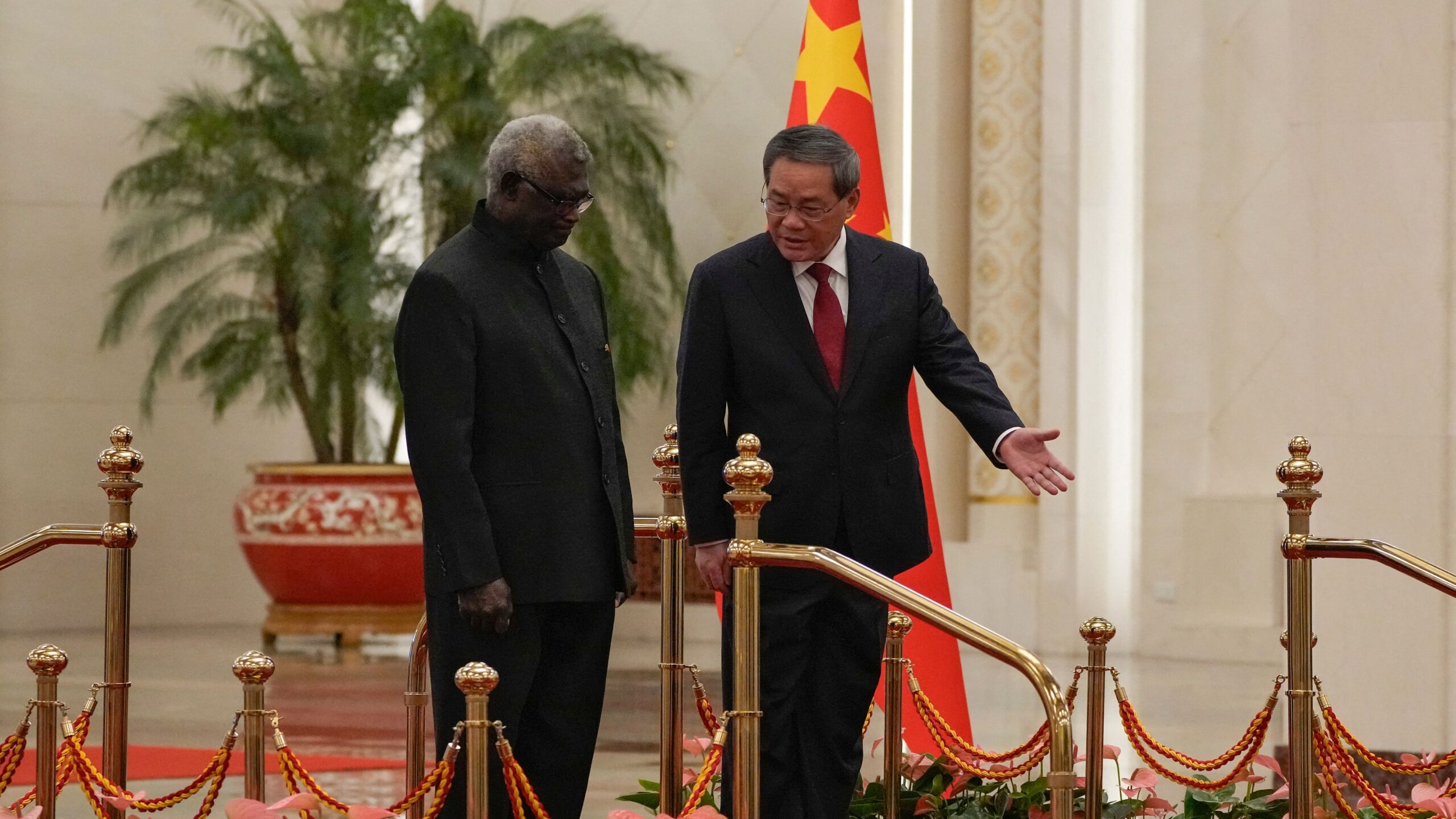
SYDNEY — Much has been made about China’s Belt and Road initiative over the last 15 years, particularly in the South Pacific, where Beijing has been working to gain political power over Washington and its allies. But despite the hype, the US has quietly surpassed China in terms of aid granted to the Pacific Island nations by 2021.
That’s according to a new study by the Australian-based Lowry Institute. The think tank’s interactive aid map tracks more than 30,000 projects worth more than $40 billion USD, spread between 2008 and 2021, to the 14 island states, collectively referred to as the Pacific Islands: Cook Islands, Fiji, Kiribati, Marshall Islands, Federated States of Micronesia, Nauru, Niue, Palau, Papua New Guinea, Samoa, Solomon Islands, Tonga, Tuvalu, and Vanuatu.
2021 marked the first time the US surpassed Chinese spending among those islands, according to Riley Duke, the data expert at Lowy who builds the map.
“US support for the Pacific [Island] countries has quadrupled in recent years from US $73 million in 2016 to US $287 million in 2021,” Duke told Breaking Defense this week. “And then China’s support to the region has declined by 60 percent over this period.”
It’s important to emphasize that the data collected by Lowry only goes through the end of calendar 2021, meaning there has been almost 20 months since where new spending has occurred — including an emphasis by the Biden administration in 2023 on building ties to the region.
Duke declined to speculate on whether the trend of the US topping China continued in 2022 and 2023, but Anna Powles, a senior lecturer at New Zealand’s Massey University, said public numbers look good for Washington and its partners.
“The trajectory identified in the Lowy Pacific Aid Map mirrors what we are seeing in 2023,” Powles wrote in an email to Breaking Defense. “Chinese aid has consistently declined over the past five years and has pivoted to target countries of value — notably Solomon Islands and Kiribati. US aid is gradually increasing; however a number of the commitments made in 2022 are still to be realised.”
Presumably, that includes part of the $810 million pledged by the US in November 2022 towards a new “Pacific Partnership Strategy.”
13 Year Trends In Pacific Spending
Still, the Lowry dataset provides a comprehensive look at major trends over a 13 year period that saw a historic level of focus on a series of small, relatively powerless islands.
Based on Lowrey’s findings, all 14 nations are not created equal. Papua New Guinea receives far and away the greatest funding, which is not surprising since it boasts 90 precent of the region’s population and accounts for the vast majority — 73 percent — of the region’s economic activity, from gold mines, liquified natural gas, communications, tourism, fishing and agriculture.
The Solomon Islands comes in second, which also makes sense, as it has emerged as the political flashpoint between the Chinese and Western political push-and-pull.
The question of aid to the region became a major security concern in 2022 after Prime Minister Manasseh Sogovare of the Solomon Islands signed a secret security pact with China last year. That prompted Australia and the United States to sharply ramp up their diplomacy and aid to the region. The United States had left much of the region diplomatically untouched for decades, not even having an embassy in the Solomon Islands since 1993. A new one has since opened, and senior American officials, including the Indo-Pacific coordinator of the National Security Council, Kurt Campbell, visited last year and pledged to provide more assistance to the island.
And yet, China is not even in the top five donors to the Solomon Islands, according to Lowry’s numbers; Instead, the top rankers are Australia, New Zealand, Japan, Taiwan and the Asia Development Bank.
“Direct budget support to Pacific Island countries has surged, increasing from an annual average of $374 million prior to the pandemic to $2.1 billion in 2020 and 2021,” a Lowy release about the map said.
The islands, all of which besides Papua New Guinea, are highly dependent on tourism, which utterly evaporated during the epidemic. They also depend on imports of food, medicine and other essentials, all of which were disrupted and often became more expensive.
One of the untold stories of the region was the vast and very rapid expansion of direct budget support to the governments of the region from the multilateral Asian Development Bank, based in Manila, after COVID-19 hit, Alexandre Dayant, an expert on the Pacific islands said in an interview.
Often used by multilateral institutions to help governments function more effectively, direct support provides money directly to governments in order to fund operations. Traditionally, bilateral aid has focused on solid deliverables: A road, a hospital or a school, partly to avoid the temptations of providing cash directly to the aid recipient.
“But the problem is that you can’t put a flag on it,” Dayant noted. “One of the reason why we hear a lot about China is that China was doing a lot of financing of large infrastructure projects in the region. And the reality is that you can when you build a bridge, when you build a highway or when you build a hospital, airport, you can always put a flag or a plaque saying, Chinese aid project.”
For perspective, the third Chinese Belt and Road Forum, which ended Oct. 18, has also seen some downsizing, at least when it comes to heads of state who attended. In 2019 some 36 heads of state and government attended, up from 29 at the first forum in 2017. This year, 22 leaders travelled to Beijing.